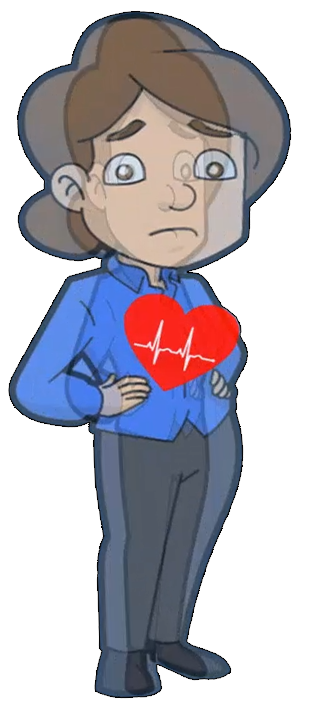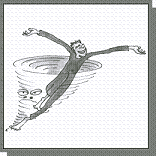When we’re having a panic attack, or starting to feel anxious, our breathing often speeds up. We may even start to hyperventilate, or feel like we can’t breathe and are going to suffocate. The key to calming our breathing when we’re feeling anxious or starting to panic isn’t to breathe deeper, which can actually make things worse, but to breathe slower. This breathing exercise is a great way to slow down our breathing, by breathing out for twice as long as we breathe in.
Automatic Negative Thoughts in CBT
Automatic Negative Thoughts (ANTs) are the spontaneous negative thoughts we have in response to unpleasant experiences, events or triggers. Our automatic negative thoughts have a big impact on our moods and how we feel. To learn more about ANTs, please watch the video below.
Automatic Negative Thoughts and CBT
Please watch the related videos below, and for more videos like these, subscribe to my YouTube Channel.
CBT Thought Record: Change Your Negative Thinking
In cognitive behavioral therapy (CBT), the thought record or thought diary is the main tool we use to modify automatic negative thoughts. Watch the video below to learn how you can use the thought record to change the way you think to change the way you feel. You can download a couple of different versions of the thought record or diary from the links below the video.
CBT Thought Record: Modify Automatic Negative Thoughts
Thought records can be difficult to complete at first. The video below helps troubleshoot potential challenges and offers some tips to make the thought record more effective. Read More
Cognitive Distortions in CBT
Cognitive distortions are our exaggerated and/or negatively biased patterns of thinking that lead to us perceiving reality inaccurately. Cognitive distortions have a big effect on our moods, and contribute to depression, anxiety, stress, anger, and all sorts of other issues.
In the video below you’ll learn to identify a number of cognitive distortions such as: all or nothing thinking, overgeneralization, mental filters, discounting the positive, jumping to conclusions, mind reading, fortune telling, magnification and minimization, catastrophizing, emotional reasoning, labeling, and personalization. Then you’ll learn how to modify your cognitive distortions and make your thinking less negative.
Cognitive Distortions in CBT
Graded Exposure, Systematic Desensitization & Anxiety
When we’re feeling anxious about something, it’s natural to want to avoid it, but avoidance is one of the worse things we can do for anxiety, and the more we avoid something, the more anxious it tends to make us. The opposite of avoidance is exposure, and one of the keys to reducing anxiety is to exposure ourselves to the things that cause us anxiety, through a gradual and controlled process called Graded Exposure or Systematic Desensitization.
Watch the videos below to learn why avoidance increases our anxiety and how we can use graded exposure or systematic desensitization to lower our anxiety.
Reducing Anxiety and Avoidance with Exposure
Managing Panic Attacks With Cognitive Behavioral Therapy (CBT)
 Panic attacks, also known as anxiety attacks, are sudden and intense waves of anxiety that can leave you worried you’re having a heart attack, about to pass out, going crazy, or with any number of other fears that something is seriously wrong with your health. Panic attacks are terrifying in isolation, and panic disorder occurs when panic attacks arise on a regular basis.
Panic attacks, also known as anxiety attacks, are sudden and intense waves of anxiety that can leave you worried you’re having a heart attack, about to pass out, going crazy, or with any number of other fears that something is seriously wrong with your health. Panic attacks are terrifying in isolation, and panic disorder occurs when panic attacks arise on a regular basis.
The most effective treatment for panic attacks and panic disorder is Cognitive Behavioral Therapy, or CBT. In the videos below, learn how anxiety escalates into a panic attack, and how you can use CBT to defuse a panic attack and make it less likely you have panic attacks in the future.
The 5-4-3-2-1 Grounding Exercise for Panic, Anxiety and Emotions
The 5-4-3-2-1 grounding technique is a great coping exercise to calm panic attacks, anxiety, stress, or if we’re feeling overwhelmed. In the 5-4-3-2-1 grounding exercise, we reconnect with the world around us by engaging our senses and looking at five things, touching four things, listening to three things, smelling two things, and tasting one thing.
5-4-3-2-1 Grounding Exercise: Coping with Panic, Anxiety & Emotions
How to Sleep Better & Cure Insomnia With CBT-I
The videos below present an overview of the CBT for Insomnia program developed by Dr. Gregg Jacobs at Harvard Medical School. For more detailed information about his online CBT-I program, please visit www.cbtforinsomnia.com.
How To Sleep Better And Cure Insomnia With CBT
Cognitive Therapy and Challenging Negative Thoughts
When we’re feeling distressed about something or going through a difficult emotional experience it can feel like our thoughts are running out of control. Our minds start racing and we find ourselves dwelling in the past, worrying about the future, or just spinning our wheels trying to think ourelves out of our problems.
Breaking the Vicious Cycle of Anxiety
 In a previous post, we looked at the vicious cycle of anxiety, in which an anxiety-provoking event triggers an anxiety-related thought, feeling, behaviour or physiological symptom, which generates additional anxious thoughts, feelings, behaviours and physiological symptoms.
In a previous post, we looked at the vicious cycle of anxiety, in which an anxiety-provoking event triggers an anxiety-related thought, feeling, behaviour or physiological symptom, which generates additional anxious thoughts, feelings, behaviours and physiological symptoms. 